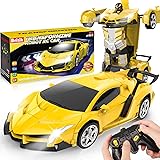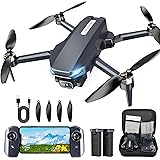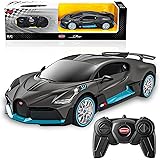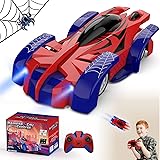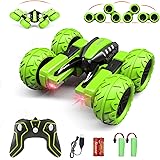The world of remote control aviation has captivated enthusiasts for decades, evolving from simple radio-controlled planes and cars to sophisticated unmanned aerial vehicles. Modern advancements in drone technology have made these devices more accessible, affordable, and user-friendly, transforming them into popular recreational gadgets for hobbyists of all ages. Many individuals are now discovering the pure joy and excitement that comes with piloting a personal drone, particularly the more approachable toy drone models that offer an excellent entry point into the hobby.
Following the captivating unboxing and initial flight review presented in the video above, it is evident that experiencing a new toy drone can evoke genuine excitement. The enthusiastic “Wow” from the presenter perfectly encapsulates the immediate appeal and wonder these compact flying machines inspire. Consequently, understanding the key features and operational aspects of these toy drones becomes crucial for anyone looking to enter this dynamic and enjoyable field of remote control flying.
Exploring the World of Toy Drones: An In-Depth Look
Toy drones represent a significant segment of the consumer drone market, primarily designed for beginners and recreational users. These devices typically prioritize ease of use, durability, and safety over advanced professional features. Market data indicates that beginner-friendly drones, particularly those under $100, account for a substantial portion of annual drone sales, making them popular gifts and entry-level options.
Distinguishing toy drones from their more advanced counterparts involves several key characteristics. Firstly, their compact size and lightweight construction make them ideal for indoor flying and easier to transport. Furthermore, most toy drones feature simplified controls, often incorporating one-key takeoff and landing functions, which significantly reduces the learning curve for new pilots.
Key Features Defining a Quality Toy Drone
When selecting a remote control drone for recreational use, several features contribute to an enjoyable and stable flight experience. Understanding these specifications assists in making an informed purchasing decision. For instance, the inclusion of a 6-axis gyroscope significantly enhances flight stability, counteracting external forces and simplifying aerial maneuvers for beginners.
Another prevalent feature is “Headless Mode,” which removes the need to orient the drone based on its front or back, simplifying directional control. This mode is particularly beneficial for new pilots who might struggle with drone orientation, allowing them to focus purely on directional inputs relative to the controller. Battery life also remains a critical factor, with most toy drones offering flight times ranging from 5 to 10 minutes per charge, although some advanced models may extend this duration to 15 minutes.
Understanding Essential Drone Components and Their Impact
Every remote control drone comprises several vital components working in unison to achieve flight. The motors, propellers, flight controller, and battery are fundamental to its operation. Brushless motors, while more common in professional drones, are occasionally found in higher-end toy drones, offering greater efficiency and longevity compared to traditional brushed motors.
Propellers are meticulously designed to generate lift, and their replacement is often straightforward, a common necessity after inevitable crashes. The flight controller acts as the drone’s brain, processing commands from the remote and adjusting motor speeds to maintain stability and execute maneuvers. Consequently, the synergy between these components dictates the drone’s overall performance and responsiveness.
Mastering Initial Flight: Tips for New Drone Pilots
For individuals venturing into drone piloting, a systematic approach to learning can prevent frustration and enhance enjoyment. Initial flights should ideally occur in open, obstacle-free environments, such as a large park or an expansive indoor space. This minimizes the risk of damage to the drone and ensures a safe learning zone.
A crucial first step involves thoroughly reading the instruction manual to understand the specific controls and features of the particular remote control drone. Practicing basic maneuvers, such as gentle takeoffs, hovering, and controlled landings, establishes a solid foundation before attempting more complex actions. It is statistically proven that pilots who spend time mastering fundamentals experience fewer crashes and greater long-term satisfaction.
Essential Pre-Flight Checks and Safety Protocols
Prior to every flight, a brief but comprehensive pre-flight checklist is advisable to ensure optimal performance and safety. Verifying that the drone’s battery is fully charged, and the remote control batteries are adequate, prevents unexpected power loss during flight. Moreover, inspecting the propellers for any damage or obstructions is paramount, as even minor imperfections can impact flight stability.
Adhering to safety regulations is not only responsible but often legally mandated. Flying within designated airspace, maintaining visual line of sight, and avoiding populated areas or airports are universal safety guidelines. Consequently, understanding local drone regulations, which vary significantly by region, becomes an indispensable part of responsible drone ownership.
Developing Advanced Piloting Skills and Techniques
Once basic control is achieved, pilots can begin exploring more advanced techniques and flight modes. Many toy drones feature varying speed settings, allowing pilots to gradually increase the drone’s responsiveness as their skills improve. Experimenting with aerial flips and rolls, often activated by a single button press, can add an exciting dimension to flying, provided sufficient altitude is maintained.
For drones equipped with cameras, practicing stable hovering and smooth directional changes is essential for capturing high-quality aerial footage. The integration of First-Person View (FPV) technology in some toy drones allows pilots to experience flight from the drone’s perspective, adding an immersive element. This immersive experience can significantly enhance the excitement of piloting a remote control drone.
Maintenance and Longevity of Your Toy Drone
Ensuring the longevity of your remote control drone involves consistent maintenance and proper storage. Regularly cleaning the drone to remove dust, dirt, and debris prevents interference with moving parts and sensors. Following the manufacturer’s guidelines for battery charging and storage is also critical, as improper handling can reduce battery lifespan and potentially pose safety risks.
Replacing damaged propellers promptly is a simple yet effective way to maintain optimal flight performance and prevent further strain on the motors. Many drone manufacturers provide readily available spare parts, simplifying the repair process. Furthermore, storing the drone in a protective case, especially during transport, safeguards it from accidental damage.
Investing a small amount of time in maintenance can significantly extend the operational life of your remote control drone, ensuring many more exhilarating flight sessions. By understanding these components and committing to regular care, pilots can maximize their enjoyment and derive lasting value from their drone purchase.




